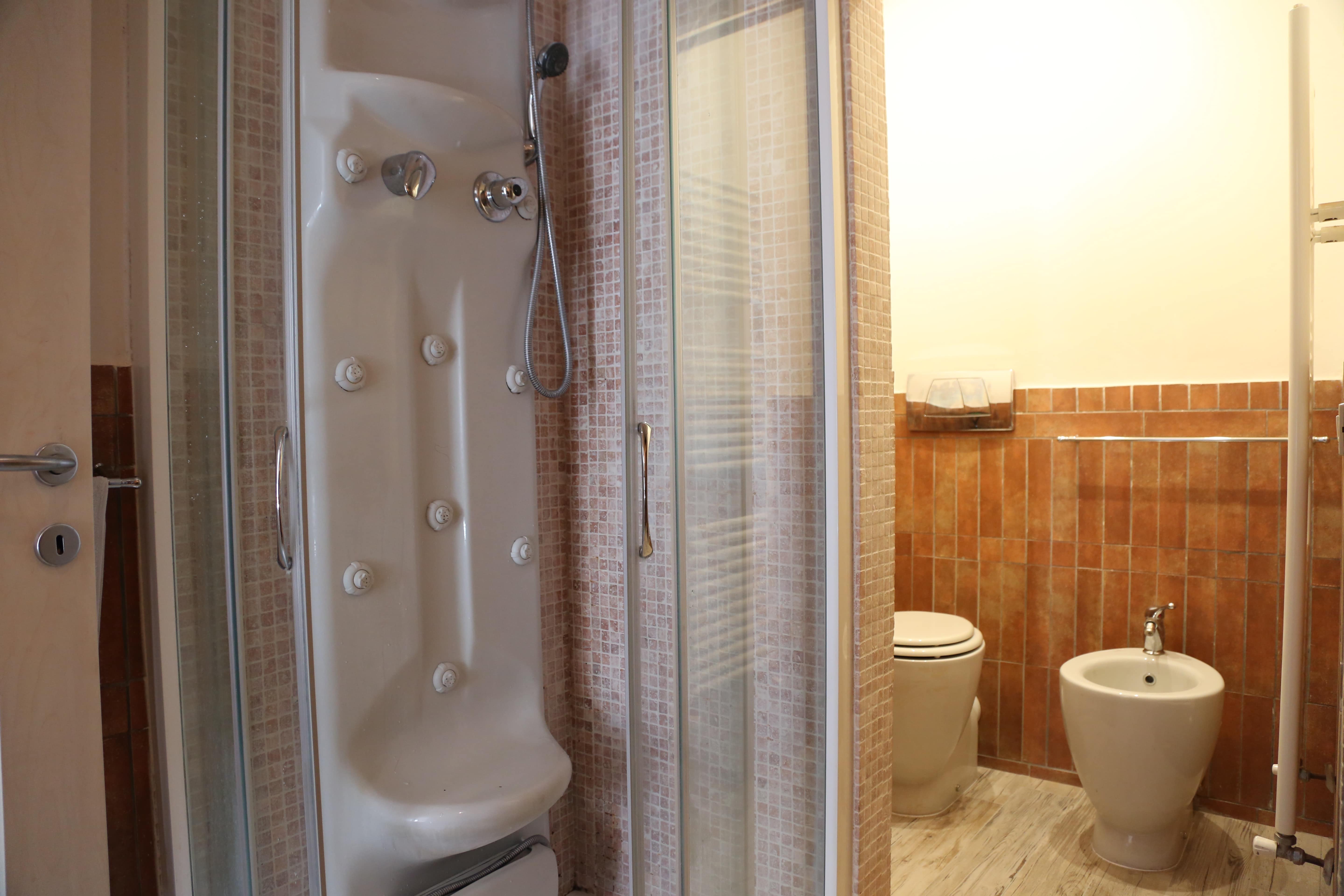Previously, I’ve written about what bathing is like in Italy, as one of the culture shock experiences when Japanese people come to this country, but another thing
in which I felt the difference of culture is the restroom here.First of all, you can find washlet toilets at just about every restroom in Japan, but not so in Italy. Even in luxury hotels, I’ve yet to see a washlet toilet here. Although it probably isn’t accurate to say that it’s the same, there is this toilet-like object next to the toilet for some reason.When I first saw this after coming to Italy, I wondered if it was a toilet for men’s use, a drinking fountain for kids or possibly a sink. But there couldn’t be a drinking fountain next to the toilet and it would be way too low for a sink. Washing your face in a sink that low would be very difficult too. I get it! Could it be an art object? But what is an art object doing in such a location? Maybe if two people need to use the restroom at once, you do your business next to each other? It couldn’t be, though, since they aren’t the same shapes, and I was just really clueless and left wondering.
 photo by Manami Takahashi
photo by Manami Takahashi photo by Manami Takahashi
photo by Manami Takahashi Its true identity was what’s called a bidet. The bidet, which is typically attached to the washlet toilet in Japan, is a separate fixture next to the toilet here in Italy. It’s used in the same way as a Japanese bidet.In Italy, the position where the water is squirted from cannot be adjusted and neither is there warm air, meaning cleaning is done by hand. Soap for use with the bidet is also sold practically everywhere. At hotels, they have a soap for bidet in addition to body soap. This shows you how using the bidet is just as common as taking a shower.
 photo by Manami Takahashi
photo by Manami TakahashiThe bidet originated in early 18th century France, which was then introduced in Italy during the latter part of that century. Despite the fact that most bidets have been removed in today’s France, the installation of the bidet became required by law during the late 1970s in Italy. Now, wherever you go use the restroom in this country, you’ll find a bidet right next to the toilet.For Japanese people already used to using the washlet toilet, they might be reluctant to use the bidet at first, but after you try it out once, you may find that it can actually be quite convenient when you have a cold and cannot take a shower, or when it’s cold in the winter and you can use it as a footbath since most homes don’t have a bathtub.Another thing about the restrooms that I found strange here was that Italy’s toilet, shower and sink are all in the same space. Because I live on my own now, I find it convenient that they’re all in the same room, but it was an extreme inconvenience when I shared a place with roommates. First thing when you wake up in the morning, you try to go use the restroom, but someone is taking a shower, or using the sink, and you have to wait. Even if you were to yell, “I really need to use the restroom!” and they said okay, would you really do your business next to someone taking a shower? I don’t think so.At any rate, it was simply miserable to start the day off with a battle for the restroom, and that was the reason I decided to find my own place.Even now, when a friend comes to stay at my place, I’ll ask my friend to use the restroom first before I take a shower, remembering those days of competing for restroom use. Once you get used to it, it feels normal that the toilet, shower and sink are all in the same place. When I go back to Japan, it does feel convenient that the toilet and bathtub are separate, but at the same time I can get upset that they aren’t in the same place as my stay in Italy gets longer. It amazes me how you can get used to certain things.Actually, there are more surprising things when it comes to restrooms. When you go out and use restrooms, I found that the toilet seat is sometimes missing! That was a real shock. Sometimes even restaurants don’t have toilet seats on the toilet. Also, the seat can be positioned very high depending on the restroom. However, there is a reason for this. For relatively larger restaurants, wheelchair accessible restrooms must be installed by law. Some places have two separate restrooms with one for people with disabilities, but if there is only one, it is designed with a larger space to be accessible by wheelchair, and the seat is positioned higher and also has no toilet seat. So, I understand the reason now and it makes sense, but as I crouch without sitting on the seat, I start wondering how other people use this toilet. It reminded me, though, that this is Italy’s barrier-free design, and thus gave me a warm feeling.It’s really amusing that looking at the restroom alone, you can find so much difference between Italy and Japan!






























































